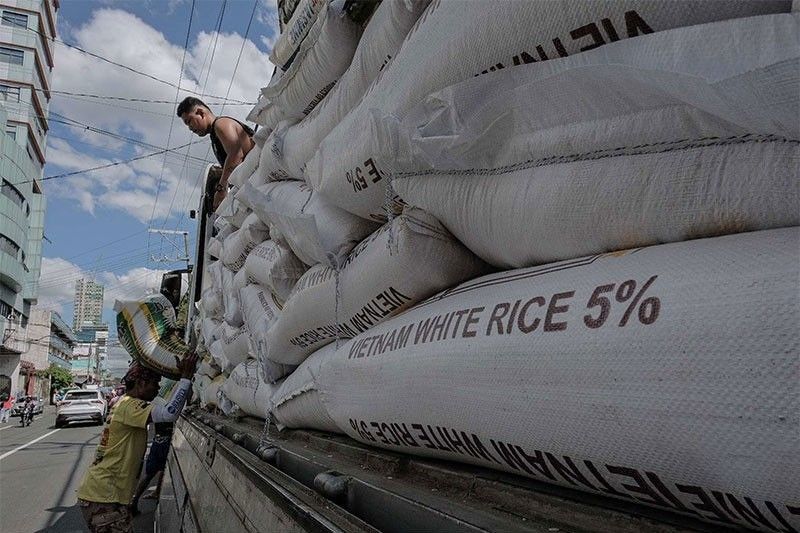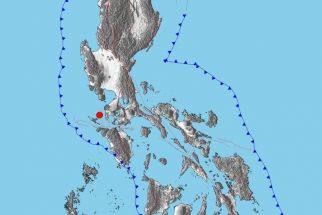DA to finalize rice branding issues in January

MANILA, Philippines — Agriculture Secretary Francisco Tiu Laurel Jr. will lead a meeting on Jan. 3 that will finalize a plan to remove branding on rice after he said that retailers and traders are intentionally confusing consumers with premium rice imports to justify the high prices of the grains.
Agriculture Assistant Secretary and spokesman Arnel de Mesa said that Tiu Laurel wants to standardize the labeling of rice so that consumers will not be shortchanged by unscrupulous traders.
“We expect that this (new labeling) will be implemented as soon as possible. As a matter of fact, the secretary already called for a meeting to discuss the issue and immediately release guidelines on this,” de Mesa said.
De Mesa said that Tiu Laurel personally uncovered during his inspection of various markets in Metro Manila the problem of the branding of imported rice.
“He discovered, during the inspection of a particular imported rice he is very familiar with, that the landed cost of the imported rice is only P40 per kilo but it is sold in the market for more than P60 per kilo. The profit margin is so big,” he said.
He added that based on the consultation of the Department of Agriculture (DA) with traders and importers, they have already profited if at least P6 to P8 per kilo will be added to the landed cost of the imported staple.
“If it’s (landed cost) P40 (per kilo), the retail price should only be P48, so one of the solutions is to remove the branding on premium and special rice,” he explained.
He added that imported rice is classified through the degree of brokenness.
“It’s five percent for premium. There are also 15 percent, 25 percent and 100 percent broken, but when sold in the market, it is not being treated as 100 percent broken and instead (it is being treated) by the brand. Traders usually label the rice as premium and special,” de Mesa said.
The agriculture official added that in the past, the DA’s focus was only regular and well-milled rice as ordinary consumers often buy them since the two are cheaper.
Tiu Laurel said locally-produced rice will be exempted from this rule to protect Filipino farmers and traders.
The meeting will include the Bureau of Plant Industry and the National Food Authority (NFA) to assess the national rice situation.
De Mesa added that the DA sees the retail price of rice to further go down in 2025 amid the downward trend in international prices.
“We are expecting that by January, the price of imported rice in the world market will further decrease. Hopefully, this will be reflected in the local market,” he said.
De Mesa further stated that Tiu Laurel has asked the Bureau of Internal Revenue to examine the books of the importers and traders to determine if they are paying the right taxes.
Tiu Laurel has said the DA can invoke a food security emergency under the amended Rice Tariffication Law, which would allow the release of buffer stocks from the NFA to stabilize prices.
He added that the DA is exploring the option of allowing government corporations like Food Terminal Inc. to import significant quantities of rice to compete directly with private importers.
The agriculture chief also ordered the DA legal division to study whether provisions of the Consumer Price Act could be activated to deal with the seeming acts of profiteering.
Tiu Laurel noted that despite President Marcos’ reduction of the rice tariff to 15 percent from 35 percent in July, prices of rice have remained stubbornly high, frustrating both the government and consumers.
He also asked the Department of Trade and Industry to assist in monitoring the prices of rice in markets and groceries.
Chaos
Farmers’ group Federation of Free Farmers (FFF) national manager Raul Montemayor yesterday warned that the plan of the DA to remove branding on rice will further cause chaos on the pricing of the staple.
“If you remove the brand, how can consumers determine the kind of rice they are procuring?” Montemayor asked.
The group’s leader was reacting to the announcement of Tiu Laurel that he plans to remove branding on rice after he said that retailers and traders are intentionally confusing consumers with premium rice imports to justify the high prices of the grains.
“They (officials of the DA) are just looking for a reason why the retail price of rice remains high. They failed to pinpoint the cause. (If) that’s (removing branding of rice) their solution, it may only further cause chaos in the pricing (of the grains),” he said in a radio interview.
“They are pressured to address the high retail prices but forgot to help the local farmers,” he further stated.
Montemayor said it should be the economic managers who should be made accountable after Executive Order 62 failed to bring down the retail price of rice despite the decision to lower the tariff on imported rice to 15 percent from the previous 35 percent.
“We are telling the DA that it did not create the problem. The economic managers were behind the lower tariff, which failed to address the high retail price of the rice but it is the DA who is finding a solution. They should instead focus on the problems of the farmers,” the FFF leader added.
“It is easy to pinpoint (who is manipulating the retail price of rice) as once the imported rice arrives, the importer declares how much he spent to bring in the imported rice. The Bureau of Customs has records. If the importer sells to the wholesaler, it has a receipt from the Bureau of Internal Revenue,” he noted.
Montemayor added that the wholesalers also have receipts of how much they sold the imported grains to the retailers.
“There are receipts so it is easy to determine who is manipulating (the retail price of rice). As of now, the retailers are being blamed, but based on the data from the Philippine Statistics Authority, the profiteering comes from the importers and wholesalers and not the retailers,” he added.
Based on the monitoring of the DA in Metro Manila markets, the retail price of imported regular milled rice is sold for as high as P45 per kilo; imported well-milled rice, as high as P56 per kilo; imported premium rice, as high as P60 per kilo and imported special rice, as high as P64 per kilo.
Meanwhile, former senator Francis Pangilinan has expressed full support for the government’s plan to declare a “food security emergency” as part of efforts to curb the prices of rice, which is a primary driver of inflation and a burden to many Filipinos.
Pangilinan said the government must exhaust all possible measures to lower rice prices.
“We fully support the government’s actions aimed at easing the burden of our countrymen who are already suffering from the high price of rice,” he said, referring to Tiu Laurel’s plan to declare a food security emergency.
Pangilinan served as a food security czar from June 2014 to September 2015 under the administration of the late president Benigno Aquino III. During his tenure, he reduced rice prices up to P3 per kilo by interventions that rice inflation reduced from 15 percent to 0.8 percent in a span of one year. This, in turn, brought down nationwide inflation to its lowest rate in 20 years. — Cecille Suerte Felipe
- Latest
- Trending

























